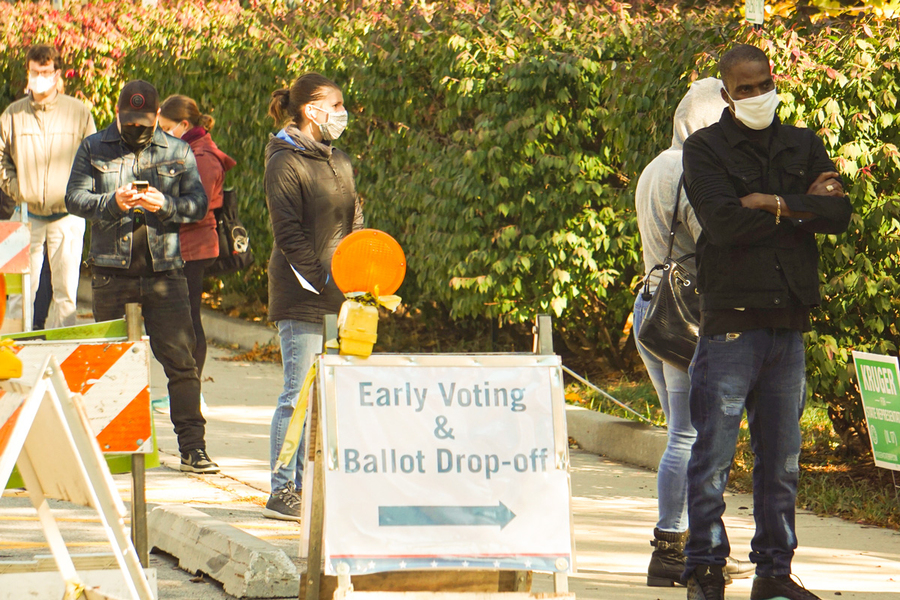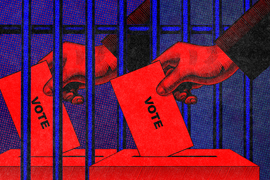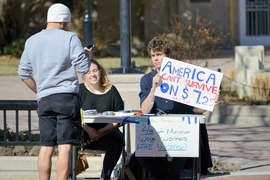Many states across the U.S. have raised the minimum wage in recent years. Such measures do not only affect low-wage workers’ pocketbooks, however. As a study by MIT political scientists shows, higher minimum wages also make people more likely to vote in elections.
The study found that in New York City, increases in the minimum wage in the mid-2010s raised voter turnout by 2 to 3 percentage points among those earning close to minimum levels. Additionally, examining U.S. counties nationwide dating back to the 1980s, the researchers found that an 8 percent increase in the minimum wage is associated with an overall voter turnout increase of one-third of 1 percent.
“We found that people who get a raise because the minimum wage goes up become slightly more likely to vote in the next election,” says Ariel White, an associate professor in MIT’s Department of Political Science and co-author of a new paper detailing the findings. “Those people, who are low-income, [become] represented a little better in elections than they typically are, because people with low incomes tend to vote less.”
The paper, “More Money, More Turnout? Minimum Wage Increases and Voting,” appears in the Journal of Politics. The authors are White, who is the Silverman Family Career Development Associate Professor of Political Science at MIT; and Zachary Markovich, a doctoral student in MIT’s Department of Political Science.
Across the U.S., 27 states and the District of Columbia have raised their minimum wages since 2014, an issue that has often become prominent in state and local politics.
The federal minimum wage has remained at $7.25 per hour since it was last raised in 2009. But state minimum wages can surpass the federal level; the highest is the District of Columbia, at $15.20, followed by the state of Washington at $14.49 and Massachusetts at $14.25, according to Department of Labor statistics. At the low end of the scale, Georgia and Wyoming both have minimum wages of $5.15 an hour, applying to some employees not covered by federal regulations.
To conduct the research, White and Markovich used a two-prong empirical strategy. First, they examined the voting records of New York City public employees before and after the city enacted minimum wage increases in 2014 and 2015. The MIT scholars then compared the changes in voting among minimum-wage workers to turnout patterns among those unaffected by the raises, to better isolate the effect of the policy change.
“If everybody’s turnout changes from one year to another, we’re accounting for that,” White says. “We’re focused on the bit of change that is being driven by the minimum wage increase, because it’s driven by this set of [workers].”
The researchers also examined the occupations of the minimum-wage workers in question, to make sure the estimates from a sample of public employees would generalize to other low-wage workers. The minimum-wage employees in question often perform tasks like serving school lunches or cleaning city parks.
Second, White and Markovich examined county-level data from across the U.S. over the years 1980 through 2016, scrutinizing both changes in minimum wages and voter turnout. While this arm of the research did not identify particular voters with the precision of the New York City employees study, it also provided a broad-ranging data set showing a similar trend over a longer time period, in more places.
“We similarly see that when the minimum wage goes up, voter turnout goes up a little bit as well, in aggregate,” White says. “So, that is some indication that this is a broader story than just the New York City data that we worked with.”
And precisely because states have established different minimum wage standards in recent decades, the variation between states — or among counties in a multistate metropolitan area — helps indicate that those policy changes do have an effect.
“From a social science [research] perspective, that kind of policy patchwork is really helpful, because you can compare states that increased their minimum wage to ones that didn’t,” Markovich observes.
As White readily notes, the study does not fully determine exactly why voting increases when minimum-wage workers earn a bit more money. One hypothesis is that better material conditions mean people have slightly more time to vote, or a better logistical capability of doing so. Another hypothesis is that receiving a raise makes minimum-wage voters more open to the value of voting.
“We can imagine a couple of possible mechanisms here,” White says. “One is the possible material or logistical changes that happen when people make substantially more money [and can] afford stable housing and regular transportation. When you have a little more money to live, you have a little more head space to think about going to vote. When you’re struggling with basic needs, you’re going to have a harder time to participate in an election.”
However, White adds, “people could be changing their attitude toward government and what government can do for them, because they just learned that government can raise their pay. So it’s possible that it could be both. We can’t disentangle those things [yet]. But we can pin down the effect.”
At the end of the paper, the scholars write that they would welcome further research specifically about the mechanisms through which better wages increase turnout. Markovich suggests that field work and surveys could help add clarity to this issue.
“What I would like to see is more evidence that arises from talking to minimum wage workers, whether it is more qualitative work involving a lot of interviews, or also possible survey work,” Markovich says. “More of that work would tell us what’s actually going through people’s heads when they see this kind of change. … I think there would be a lot of value to someone doing that.”










